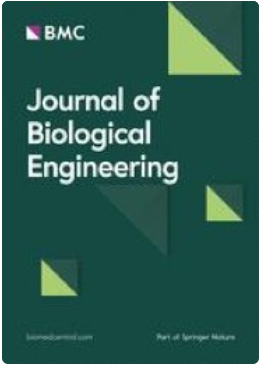Poly-3-hydroxybutyrate-co-3-hydroxyvalerate(PHBV)-Polyethylene glycol 20k(PEG20k) as a promising delivery system for PT2399 in the treatment of disc degeneration
IF 6.5
3区 生物学
Q1 BIOCHEMICAL RESEARCH METHODS
引用次数: 0
Abstract
Disc degeneration often leads to a highly prevalent symptom known as low back pain. Healthy nucleus pulposus tissue exhibited a hypoxic environment devoid of blood vessels, while degenerated nucleus pulposus experienced hypoxic deterioration and the formation of new blood vessels. In this study, the expression of important genes like HIF-2α was found to vary between normal and degenerated nucleus pulposus cells when compared to the hypoxic surroundings. The aim of this study was to examine how HIF-2α is controlled in nucleus pulposus cells under hypoxic conditions and its role in angiogenic mechanisms. To assess the impact of gradual inhibition of HIF-2α on disc degeneration, we utilized PHBV-based synthetic materials loaded with inhibitors of HIF-2α. Specifically, we employed LPS and PT2399 loaded PHBV-PEG20k (PP20) to intervene with human nucleus pulposus cells. Additionally, we treated APD rat models with PT2399 loaded PP20 to evaluate its effects. The expression levels of target markers in nucleus pulposus cells were detected using PCR, WB, and immunofluorescence. Additionally, the effect of drugs on disc degeneration was identified through HE staining. The findings indicated that HIF-2α, CAIX, PPP1R15A, VEGFA, and EGLN3 could potentially serve as new indicators of disc degeneration. Additionally, HIF-2α might contribute to the progression of disc degeneration through involvement in angiogenesis and the regulation of hypoxia. Furthermore, the utilization of PT2399 loaded PHBV-PEG20k (PP20) could potentially offer a fresh alternative for treating disc degeneration.聚-3-羟基丁酸-共-3-羟基戊酸(PHBV)-聚乙二醇 20k(PEG20k)作为 PT2399 有望用于治疗椎间盘退行性变的递送系统
椎间盘退化通常会导致腰背痛这一高发症状。健康的髓核组织表现出缺氧环境,没有血管,而退化的髓核组织则出现缺氧恶化并形成新血管。本研究发现,与缺氧环境相比,正常和退化的髓核细胞中 HIF-2α 等重要基因的表达存在差异。本研究旨在探讨缺氧条件下髓核细胞如何控制 HIF-2α 及其在血管生成机制中的作用。为了评估逐步抑制HIF-2α对椎间盘变性的影响,我们使用了PHBV基合成材料,其中装载了HIF-2α抑制剂。具体来说,我们采用了负载 LPS 和 PT2399 的 PHBV-PEG20k (PP20)来干预人髓核细胞。此外,我们还用装载了 PT2399 的 PP20 对 APD 大鼠模型进行了处理,以评估其效果。我们使用 PCR、WB 和免疫荧光检测了目标标记物在髓核细胞中的表达水平。此外,还通过 HE 染色鉴定了药物对椎间盘变性的影响。研究结果表明,HIF-2α、CAIX、PPP1R15A、VEGFA和EGLN3有可能成为椎间盘变性的新指标。此外,HIF-2α 可能会通过参与血管生成和缺氧调节来促进椎间盘变性的进展。此外,利用负载PT2399的PHBV-PEG20k(PP20)有可能为治疗椎间盘退变提供一种新的选择。
本文章由计算机程序翻译,如有差异,请以英文原文为准。
求助全文
约1分钟内获得全文
求助全文
来源期刊

Journal of Biological Engineering
BIOCHEMICAL RESEARCH METHODS-BIOTECHNOLOGY & APPLIED MICROBIOLOGY
CiteScore
7.10
自引率
1.80%
发文量
32
审稿时长
17 weeks
期刊介绍:
Biological engineering is an emerging discipline that encompasses engineering theory and practice connected to and derived from the science of biology, just as mechanical engineering and electrical engineering are rooted in physics and chemical engineering in chemistry. Topical areas include, but are not limited to:
Synthetic biology and cellular design
Biomolecular, cellular and tissue engineering
Bioproduction and metabolic engineering
Biosensors
Ecological and environmental engineering
Biological engineering education and the biodesign process
As the official journal of the Institute of Biological Engineering, Journal of Biological Engineering provides a home for the continuum from biological information science, molecules and cells, product formation, wastes and remediation, and educational advances in curriculum content and pedagogy at the undergraduate and graduate-levels.
Manuscripts should explore commonalities with other fields of application by providing some discussion of the broader context of the work and how it connects to other areas within the field.
 求助内容:
求助内容: 应助结果提醒方式:
应助结果提醒方式:


